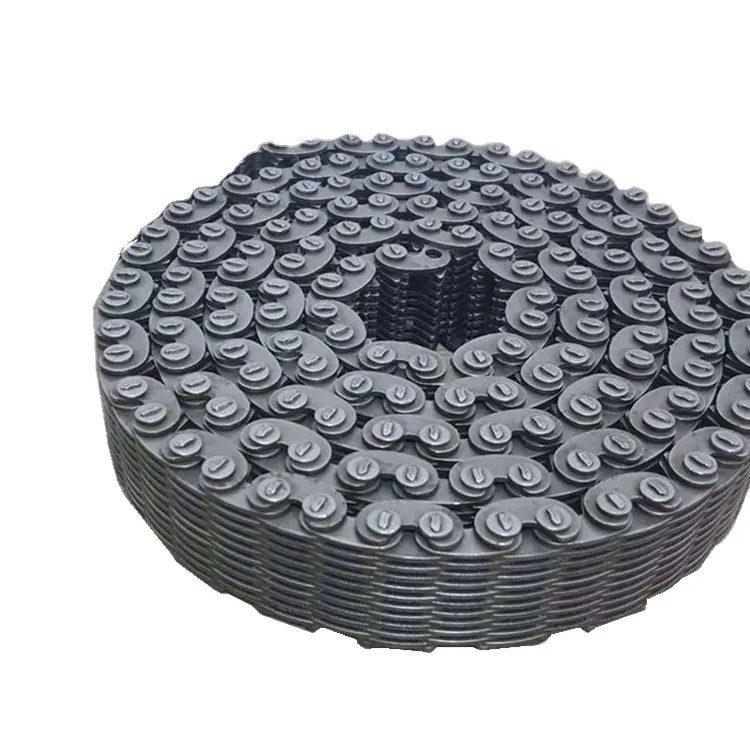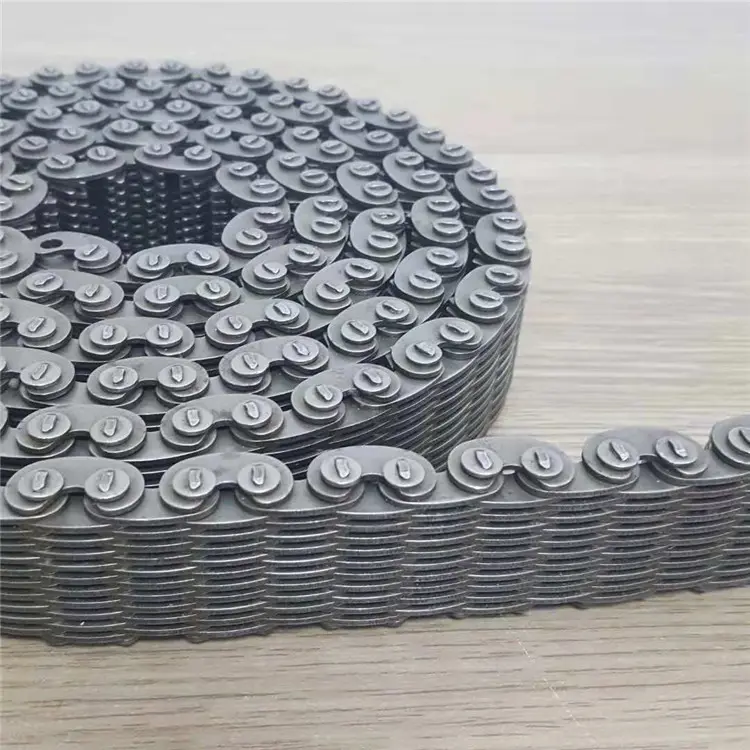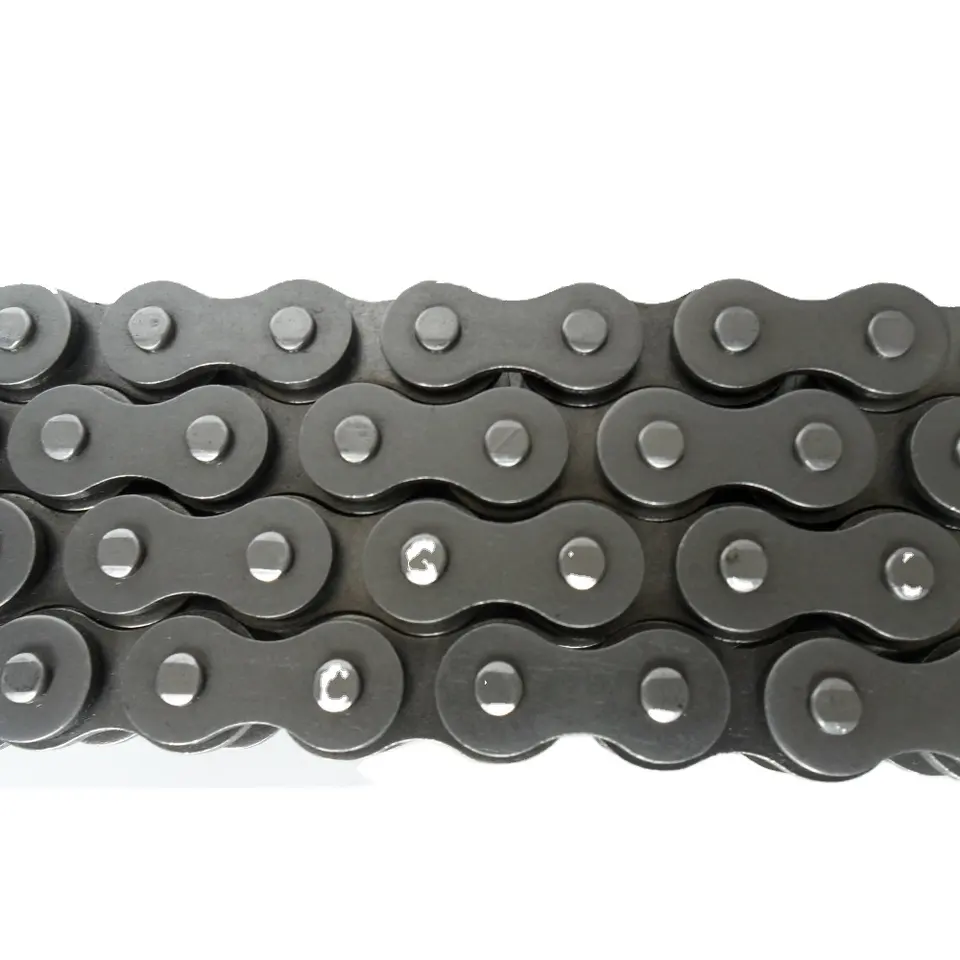Product Description
Granville Electrical & Mechanical Company Limited
Chain, Sprocket & Pulley
01 Introduction
>Granville supply a vast range of power transmission products.
>We have the ability to keep target inventory and manufacture made to order products to meet the needs of any specific application.
>We offer exceptional delivery times on stock and made-to-order products.
02 Applications:
| 1 | Driving system |
| 2 | Sand and CZPT quarries |
| 3 | Pulp and paper industry |
| 4 | Food and beverage |
| 5 | Oil and gas |
| 6 | Metals |
| 7 | Mining, mineral processing and cement |
| 8 | Unit packaging, and recycling |
| 1 | Short pitch precision roller chains (A.B Series) |
| 2 | Heavy duty series roller chains |
| 3 | Cottered type short pitch chains (A series) |
| 4 | SP series high strength short pitch roller chains O-Ring chains |
| 5 | Corrosion resistant/Zinc, Nickel-plated chains |
| 6 | Side bow chains |
| 7 | Self-lubrication roller chains |
| 8 | Coupling chains |
| 9 | Double pitch transmission chains |
About Roller Chain and Sprockets
>>Roller Chain
Roller chain links engage with matched sprocket teeth to transmit power between rotating shafts. Since there’s no slippage and little stretch, chain drives can handle heavy loads and high torque.
Sizing Roller Chain and Sprockets-ANSI roller chain and sprockets have a standard ANSI number. Metric roller chain and sprockets have a standard ISO number. Only use chain and sprockets with the same number together.
Determine size by measuring pitch. Pitch is the distance between the pin centers of a chain link.
Link Types
Connecting links are also known as master links. They’re used to join the ends of a chain length. The side plate is easy to remove for attaching to a chain.
Adding links are also known as roller links. They require 2 connecting links to join chain.
Adding-and-connecting links are also known as half links and offset links. A combination of connecting and adding links, they can join chain that requires an odd number of links. The side plate is easy to remove for attaching to the chain.
>>Choosing a Sprocket
Sprockets attach to rotating shafts and transmit power to your roller chain. Idler sprockets maintain constant tension on your drive by pressing against your chain to take up the slack and reduce wear and vibration. Bushing-bore sprockets mate with bushings that can be swapped out for different bore size, so there’s no need to replace your sprocket when working with multiple shaft diameters. Machinable-bore sprockets have an unfinished bore that can be machined for a custom fit.
>>Metric Roller Chain and Links
This chain conforms to ISO 606B and is compatible with BS 228 (British standard) and DIN 8187 (German standard).
Connecting links are also known as master links. They’re used to join the ends of a chain length. The side plate is easy to remove for attaching to a chain. Adding-and-connecting links are also known as half links and offset links. They can join chain that requires an odd number of links. For trade size 04B and 05B, an additional connecting link is required to join them to chain.
| DIN/SO Chain No | Pitch | Roller diametor | Width between Inner plates | Pin diameter | Pin length | Inner plate depth | Plate thickness | Ultimate | Average tensile strength | Weight meter | |
| P | d1 max | b1 min | d2 max | L max | Lc max | h2 max | VT max | Q min | Qo | q | |
| mm | mm | mm | mm | mm | mm | mm | mm | KN/LB | kN | kg/m | |
| 05B-1 | 8 | 5.00 | 3.00 | 2.31 | 8.20 | 8.9 | 7.10 | 0.80 | 5.0/1136 | 5.9 | 0.20 |
| 06B-1 | 9.525 | 6.35 | 5.72 | 3.28 | 13.15 | 14.1 | 820 | 1.30 | 9.0/2045 | 104 | 0.43 |
| 08B-1 | 12.70 | 8.61 | 7.75 | 4.46 | 16.70 | 182 | 11.80 | 1.60 | 18.0/4091 | 194 | 0.71 |
| 10B-1 | 15.875 | 10.16 | 9.65 | 5.08 | 19.50 | 20.9 | 14.70 | 1.70 | 22.4/5091 | 27.5 | 0.96 |
| 12B-1 | 19.05 | 12.07 | 11.68 | 5.72 | 22.50 | 242 | 16.00 | 1.85 | 29.0/6591 | 32.2 | 1.21 |
| 16B-1 | 25.40 | 15.88 | 17.02 | 8.28 | 36.10 | 37.4 | 21.00 | 4.15/3.1 | 60.0/13638 | 72.8 | 2.70 |
| 20B-1 | 31.75 | 19.05 | 19.56 | 10.19 | 41.30 | 45.0 | 26.40 | 4.5/3.6 | 95.0/21691 | 100.7 | 3.70 |
| 24B-1 | 30.10 | 25.40 | 25.40 | 14.63 | 53.40 | 57.8 | 33.20 | 6.0/4.8 | 160.0/36364 | 178.0 | 7.10 |
| 20B-1 | 44.45 | 27.94 | 30.99 | 15.90 | 65.10 | 69.5 | 36.70 | 7.5/6.0 | 200.0/45455 | 222.0 | 8.50 |
| 32B-1 | 50.80 | 29 | 30.99 | 17.81 | 66.00 | 71 | 42.00 | 7.0/8.0 | 250.0/56818 | 277.5 | 10.25 |
| 40B-1 | 63.50 | 30.37 | 36.10 | 22.88 | 82.20 | 892 | 62.96 | 8.5/8.0 | 336.0/0682 | 394.0 | 16.35 |
| 48B-1 | 76.20 | 48.26 | 45.72 | 29.24 | 99.10 | 107.0 | 63.80 | 12.0/10.0 | 560.0/127272 | 621.6 | 25.00 |
| 56B-1 | 86.90 | 53.98 | 53.34 | 34.32 | 114.6 | 123.0 | 77.80 | 13.5/12.0 | 850.0/193160 | 940.0 | 35.78 |
>>Material Available & Applications
More
To get a quote or for additional information please contact us and we’ll be happy to assist you.
What We Do
01 Service
>Granville helps customer transmit mechanical power with abroad offering of power translocation components, and systems for automotive and various Industrial applications.
>Whether your Industry is involved in agriculture, construction, automobiles, food, mining, oil & gas, or metal handling, Granville can meet your needs with the exact transmission you need, when you need it.
>On-going research and development efforts allow Granville to continuously improve quality, enhance production processes, and add value.
02 Related Product Ranges
| 1 | Driving Chains (This Page) |
| 2 | Conveyor Chains |
| 3 | Auto, Bicycle & Motorcycle Chains |
| 4 | Leaf & Hoising Chains |
| 5 | Sprockets |
| 6 | Gears |
| 7 | Synchronous Sprockets |
| 8 | Sheaves |
| 9 | Couplings |
Click to the related page
|
Shipping Cost:
Estimated freight per unit. |
To be negotiated |
|---|
| Standard or Nonstandard: | Standard |
|---|---|
| Application: | Textile Machinery, Garment Machinery, Conveyer Equipment, Packaging Machinery, Electric Cars, Motorcycle, Food Machinery, Marine, Mining Equipment, Agricultural Machinery, Car |
| Surface Treatment: | Chrome/Zinc/Nickel Plating/Polishing |
| Samples: |
US$ 0/Meter
1 Meter(Min.Order) | Order Sample Negotiation
|
|---|
| Customization: |
Available
| Customized Request |
|---|

What are the noise levels associated with a motor chain?
The noise levels associated with a motor chain can vary depending on various factors:
1. Chain Design:
The design of the motor chain, including the type of links and the pitch, can influence the noise levels. Chains with precision-formed and accurately machined components tend to produce less noise compared to chains with rough or uneven surfaces.
2. Lubrication:
Proper lubrication of the motor chain is essential to reduce friction and noise. Insufficient or improper lubrication can result in increased friction, leading to higher noise levels. Regular lubrication with suitable lubricants can help minimize the noise generated by the chain.
3. Tension and Alignment:
A motor chain that is improperly tensioned or misaligned can produce excessive noise. It is important to ensure that the chain is properly tensioned and aligned to minimize noise generation.
4. Wear and Maintenance:
As a motor chain wears over time, it may develop loose links or damaged components, leading to increased noise during operation. Regular maintenance and timely replacement of worn-out parts can help prevent excessive noise levels.
5. Surrounding Environment:
The noise levels in the surrounding environment can also affect the perceived noise from the motor chain. Other machinery, equipment, or environmental factors can contribute to the overall noise levels in the area.
Overall, the noise levels associated with a motor chain can be minimized through proper chain design, adequate lubrication, correct tensioning and alignment, regular maintenance, and a well-controlled surrounding environment. It is important to follow manufacturer guidelines and recommendations for noise reduction techniques and use appropriate noise-dampening measures if necessary.

Can a motor chain handle heavy loads?
Yes, motor chains are designed to handle heavy loads in various applications. Here are some factors to consider:
1. Chain Strength: Motor chains are available in different strength ratings, typically measured in terms of their maximum allowable tension or breaking strength. It is important to select a motor chain with a strength rating suitable for the anticipated loads in your application. Chains with higher strength ratings can handle heavier loads.
2. Chain Material: Motor chains are commonly made from high-strength steel or alloy materials that provide excellent durability and load-bearing capacity. The choice of material depends on the specific application requirements, including the expected load, environmental conditions, and any regulatory standards.
3. Chain Design: Motor chains designed for heavy-load applications often have robust construction features to enhance their load-carrying capabilities. These may include larger pitch sizes, thicker plates, hardened components, and precision manufacturing. The design ensures that the chain can withstand the forces and stresses associated with heavy loads.
4. Lubrication: Proper lubrication is essential for motor chains handling heavy loads. It helps reduce friction and wear, ensuring smooth operation and extending the chain’s service life. Adequate lubrication also prevents overheating and corrosion, which can negatively impact the chain’s load-carrying capacity.
5. Sprocket Design: The sprockets that engage with the motor chain also play a crucial role in handling heavy loads. Sprockets should be designed to evenly distribute the load across the chain and provide reliable engagement. Robust and properly sized sprockets ensure that the chain can effectively transmit the heavy loads without excessive wear or failure.
When considering a motor chain for heavy-load applications, it is important to consult the manufacturer’s specifications and guidelines. They can provide detailed information on the chain’s load-carrying capacity, including factors such as tensile strength, working load limits, and recommended safety factors. Proper chain selection, regular maintenance, and adherence to load limitations are key to ensuring safe and efficient operation under heavy loads.

How do you select the right motor chain for a specific motor?
When selecting a motor chain for a specific motor, there are several factors to consider. Here is a step-by-step guide:
1. Determine the motor specifications: Start by understanding the motor’s power rating, speed, and torque requirements. This information will help you choose a motor chain that can handle the motor’s power output and torque demands.
2. Identify the application requirements: Consider the specific application in which the motor will be used. Determine if the motor will be subjected to high loads, high speeds, or harsh environmental conditions. This will help you select a motor chain that is suitable for the application’s demands.
3. Determine the chain type: Motor chains come in various types, including roller chains, silent chains, bush chains, and more. Each chain type has its own characteristics and performance capabilities. Select a chain type that aligns with the requirements of the motor and application.
4. Calculate the chain size: Determine the required chain size based on the motor’s power and torque requirements. Consider factors such as pitch size, roller diameter, and number of chain links. Manufacturers typically provide chain size charts or calculation tools to assist in selecting the right chain size.
5. Consider the environmental factors: Take into account the environmental conditions in which the motor will operate. If the motor is exposed to moisture, chemicals, high temperatures, or other harsh elements, choose a motor chain with appropriate corrosion resistance, temperature resistance, and durability.
6. Consult manufacturer recommendations: Consult the motor manufacturer’s recommendations or specifications to identify any specific requirements or restrictions for motor chains. They may provide guidance on compatible chain types, lubrication requirements, and maintenance recommendations.
7. Evaluate cost and availability: Consider the cost and availability of the selected motor chain. Evaluate factors such as initial cost, maintenance requirements, and the availability of spare parts or replacements.
By considering these factors and conducting thorough research, you can select the right motor chain that matches the motor’s specifications, application requirements, and environmental conditions. It is recommended to consult with motor and chain manufacturers or industry experts for further guidance and assistance.


editor by CX 2023-08-05